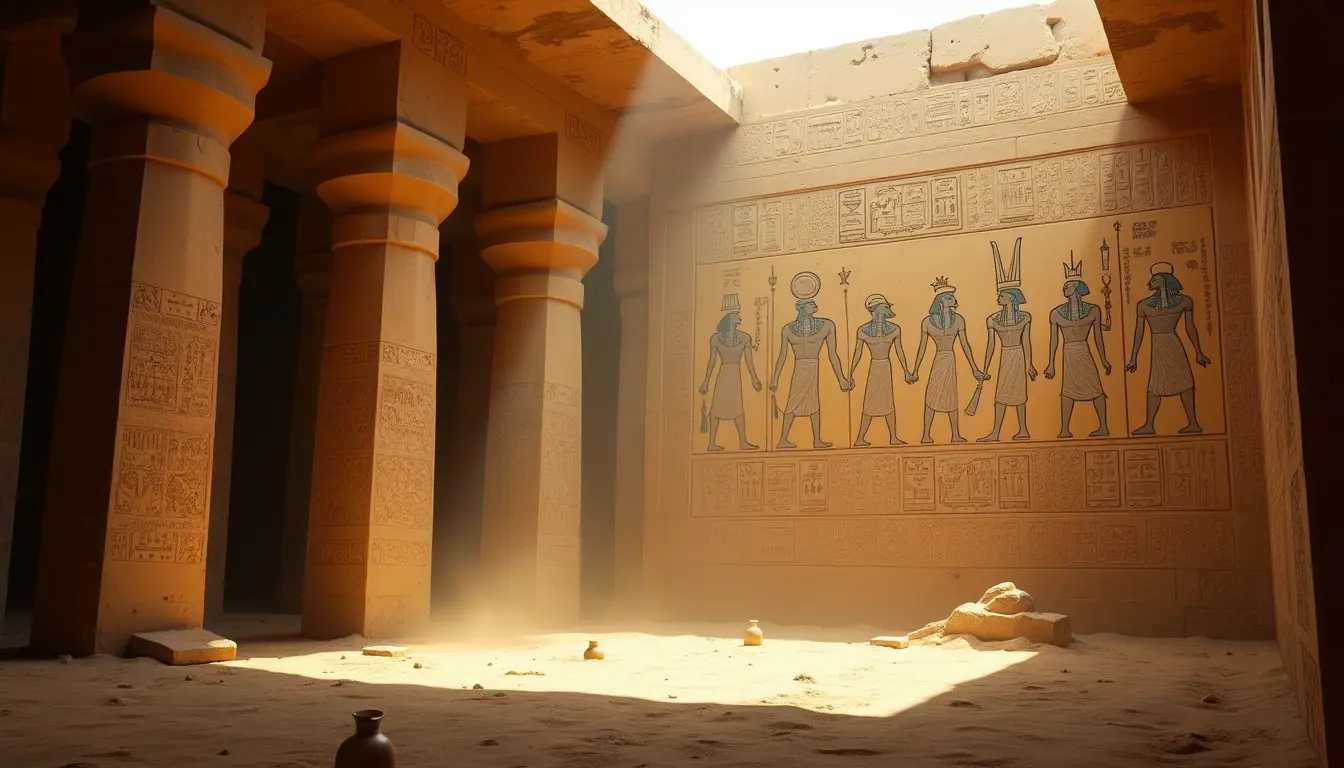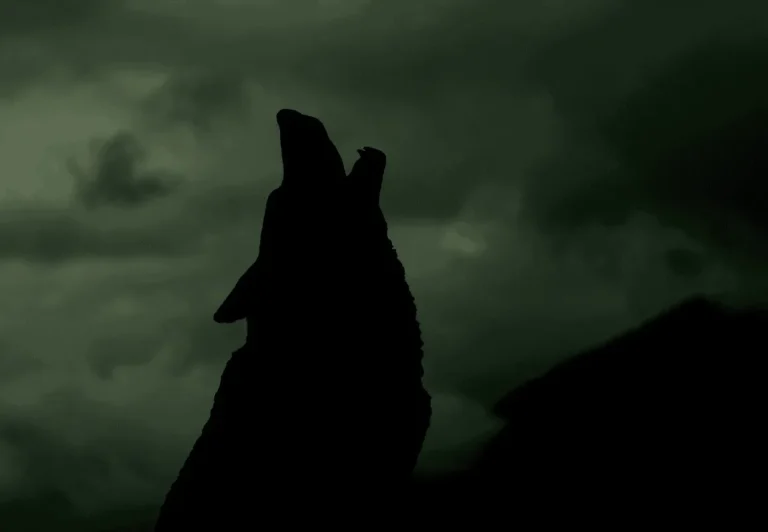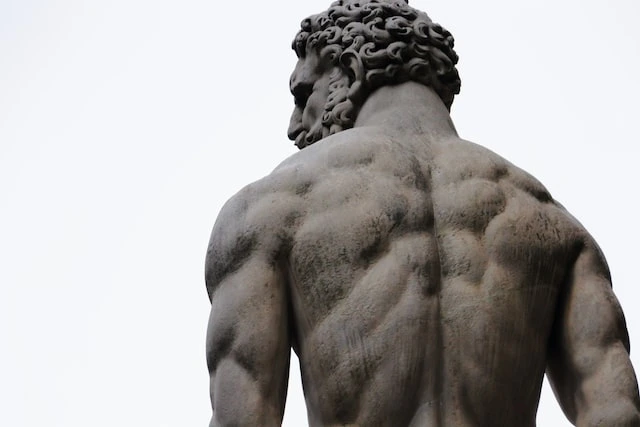Ancient Egyptian Gods and Goddesses: Hidden Stories Finally Revealed

Ancient Egypt had one of history’s most intriguing belief systems. Their pantheon included an impressive 1,500 deities that controlled every aspect of life and nature. These powerful beings, known as ancient Egyptian Gods and Goddesses, ruled over specific parts of the environment – from the Nile’s yearly floods to the judgment of souls after death. A comprehensive list of Egyptian Gods reveals the complexity and diversity of their religious system.
The ancient Egyptians shared a deep connection with their Egyptian deities that went way beyond the reach and influence of simple worship. The Ennead, a group of nine major ancient Egyptian Gods and Goddesses, are the foundations of Egyptian creation myths. This group included Atum, Shu, Tefnut, Geb, Nut, Osiris, Isis, Seth, and Nephthys. Some Gods like Amun-Ra evolved from minor deities to become supreme rulers, while others like Anubis, the god of death in Egypt, played vital roles in significant ceremonies. Anubis’s role included overseeing the weighing of the heart, where 42 divine judges decided a soul’s destiny.
Let’s dive into these compelling Egyptian deities, their untold stories, and recent findings that have revealed new insights about their influence on ancient Egyptian society.
The Secret Origins of Ancient Egyptian Gods
The first written records of ancient Egyptian God names appeared during the Early Dynastic Period (c. 3100–2686 BC). Researchers have found that these deities grew from prehistoric religious beliefs. Early artwork showed various animal and human figures that later became the most important religious symbols.
Recent Archeological Discoveries
Teams have made remarkable findings at Saqqara, a massive necropolis of Memphis. The latest excavations have revealed two major embalming workshops and tombs of priests dating back 4,500 years. The teams also found terracotta statues of Isis, the Egyptian goddess of magic and resurrection, along with artifacts showing Harpocrates, the child deity.
Hidden Creation Myths
Ancient Egyptians had several creation stories from different regions. These myths centered on the belief that the world emerged from an endless, lifeless sea when the sun first rose, at a time called zp tpj (the first occasion). The Pyramid Texts tell us how Atum, the earliest god, rose from chaotic waters to create Shu (air) and Tefnut (moisture). This creation myth formed the basis of Egyptian mythology gods. Ptah, another important creator deity, was believed to have created the world through the power of his thoughts and words.
Evolution of Divine Powers
Divine powers developed alongside Egypt’s political changes. The unification of Egypt around 3100 BC led local patron deities to gain national importance. The Old Kingdom (c. 2686–2181 BC) saw the rise of major deities like Isis and Amun. Egypt’s contact with neighboring civilizations brought new deities – Miket appeared in Egyptian texts during the Middle Kingdom (c. 2055–1650 BC), likely due to Nubian influence.
Egyptian religion reached its peak when Upper Egypt’s rulers became pharaohs of the entire country. These sacred kings claimed the right to interact with the gods, and divine kingship became religion’s unifying focus. New deities emerged from places and concepts, while some gods got opposite-sex counterparts.
Untold Stories of the Nine Gods of Egypt
The sands of ancient Egypt have revealed amazing secrets as archeologists have found remarkable evidence about the legendary Ennead, nine main deities that shaped Egyptian mythology. These powerful beings didn’t exist alone but created a complex network of relationships that shaped Egyptian religion for thousands of years.
New Evidence About the Ennead
Heliopolis has yielded archeological treasures that show how the Ennead’s power lasted from the Old Kingdom through the Ptolemaic Period. Atum, the supreme creator deity, rose from Nun’s primordial waters and became the foundation of this divine family. These nine gods started as separate entities but grew more connected over time. They formed a cosmic family that represented the basic forces of the universe.
Secret Relationships Between Gods
The Ennead’s divine relationships were rich with complexity. Osiris, the Egyptian God of the underworld, and Isis stood for fertility and order, which balanced against Seth and Nephthys who brought chaos. A hieroglyphic text that scholars decoded shows that Ra cursed Nut, the sky goddess, because she fell in love with Geb. Thoth, the Egyptian god of wisdom and writing, stepped in to help her, creating five special days outside the solar year when she could give birth to her children.
Lost Temples and Sacred Sites
Sacred sites have given archeologists amazing new insights. They found the original Temple of Osiris at Abydos, which Seti I built to bring back traditional beliefs after Akhenaten’s reign. The temple’s seven sanctuaries honor different deities and still have their original colored bas-relief paintings.
Archeologists made an incredible find at Athribis – a 2,100-year-old temple hidden in a cliff face. The temple walls show beautiful reliefs of King Ptolemy VIII giving offerings to the lion-headed goddess Repit and her son Kolanthes. These are surrounded by astronomical symbols that combine human bodies with animal heads.
Abydos stands out as one of Egypt’s oldest centers of worship. The Great Temple lies mostly under modern buildings but holds the Abydos King List, which is a great way to get chronological records of dynastic pharaohs. These archeological finds help us learn about how Egypt’s nine gods touched every part of ancient Egyptian life.
Strongest Egyptian Gods Revealed
The ancient Egyptian pantheon featured Gods and Goddesses who possessed extraordinary powers that made them unique. Archeologists have uncovered evidence of a complex hierarchy where each divine being had specific abilities and ruled different aspects of life. This section explores the Egyptian Gods and their powers.
Hierarchy of Divine Powers
Ra, the solar deity, stood at the top of this hierarchy, with Osiris, who ruled the afterlife, right below him. Isis grew more powerful by taking on characteristics of other Goddesses. Her magical abilities surpassed those of all other Gods.
Osiris

Osiris wielded immense power as the afterlife’s ruler. Without doubt, he became more influential after emerging as the universal symbol of resurrection. As the God of death in Egypt, he ruled both the realm of the dead and made crops grow. His power reached beyond death and brought life from the underworld to plants and the yearly Nile flood.
Isis

Isis became an unstoppable force in Egyptian mythology. People knew her as the cleverest among millions of gods. She had remarkable magical powers that helped her bring Osiris back to life and shield Horus. Her influence grew until she ruled the entire cosmos and controlled nature and fate. Isis was also known as the Egyptian Goddess of love and motherhood.
Seth

Seth started as a sky god who represented the chaos needed to balance the ordered world. He protected Ra’s solar boat from chaos forces with his fighting skills. His strength became legendary – he carried a scepter weighing over 4,500 pounds.
Neith

Neith ranks among Egypt’s oldest deities and ruled over warfare and creation. She created birth itself and wove the world on her loom each day. She settled disputes between Gods and showed this by stepping in between Horus and Seth.
Mars

Egyptians called Mars “Horus of the Horizon” and later “Her Deshur”. This sky god became linked to Sekhmet, the goddess of war and healing, because it looked blood-red.
Horus

Horus ruled both sun and moon powers as a sky God – his right eye stood for the sun and his left eye represented the moon. Every living pharaoh embodied him on Earth, extending his power to kingship.
Sekhmet

Sekhmet, the powerful warrior goddess, earned the title “the eye of Ra”. Hot desert winds came from her breath, and she could both destroy and heal. Egyptians feared and respected her because of this dual nature.
Bastet

Bastet changed from a fierce lioness warrior Goddess into a deity who protected homes. She watched over pregnancy, childbirth, and helped prevent contagious diseases.
Battle Stories Never Told Before
The most epic divine battle tells of Sekhmet’s rampage through Egypt. She almost wiped out humanity until Ra stepped in with a clever trick using beer dyed red to look like blood.
Symbols of Ultimate Authority
Sacred symbols showed divine power: the Eye of Horus meant protection and royal power, the Was Scepter represented rule, and the Djed pillar symbolized stability. These symbols brought the Gods’ authority to Earth and let humans receive divine protection.
Hidden Roles of Egyptian Goddesses
Female deities had remarkable influence in ancient Egyptian society and often surpassed their male counterparts in magical prowess and spiritual authority. Isis showed magical abilities that exceeded all other deities.
Female Deities Found Recently
Stone blocks found at Elephantine Island show early representations of female deities. Neith served as the sun god Re’s mother and commanded both hunting and warfare. Among other powerful figures, Sekhmet became a formidable Goddess of war and destruction. Her name came from the ancient Egyptian word sekhem, which means ‘powerful’.
Secret Rituals and Ceremonies
Isis’s mystery rites were some of the most sacred ceremonies in ancient Egypt. These confidential rituals included:
- Initiates shaving their heads and wearing colorful robes
- Carrying the sistrum, a sacred rattle associated with the goddess
- Participating in secret ceremonies with symbolic death and rebirth
Archeological evidence shows these ceremonies spread beyond Egypt’s borders and reached as far as England. The worship of Isis evolved into a ‘mystery religion’ by the first century B.C., and participation required strict secrecy.
Power Behind the Throne
Female deities were the invisible force that kept cosmic order. Isis showed this power as the kings’ protector and her ability to exceed traditional boundaries. She became known as the Queen of the Universe because her influence grew so big.
These Goddesses shaped Egyptian society through their different roles. Bastet protected homes and pregnant women and had a connection to moon worship. Nephthys worked with Isis to protect the dead, while Mut held great influence at Thebes.
Isis’s tears had special meaning because they connected with rain, the sky, and the Nile’s flooding. She was the goddess whose tears caused the Nile to rise, controlling plant growth and ruling over earth, sky, and the realm of the dead. Her power grew so big that she took on aspects of other goddesses, including Aphrodite, Artemis, and Demeter.
Lost Legends of the Egyptian Pantheon
Archeologists have found remarkable texts buried under layers of sand and time that tell untold stories of the Egyptian pantheon. These ancient writings we found in tombs and temples cast new light on ancient Egyptian gods and goddesses’ complex mythology.
Forgotten Mythological Tales
The tale of Ammit, the fearsome “eater of the damned,” lies hidden within texts found lately. This Egyptian God had an extraordinary combination of animal parts – a crocodile’s head, a lion’s body, and a hippopotamus’s hindquarters. The story of Khepri, the morning sun deity, came from watching humble scarab beetles. Ancient Egyptians believed these beetles could create themselves, which made them powerful symbols of regeneration.
Recovered Ancient Texts
Humanity’s oldest religious writings are the Pyramid Texts, dating back to the 5th and 6th Dynasties of the Old Kingdom (c. 2613-2181 BCE). These sacred inscriptions mention over two hundred gods and goddesses, from prominent deities to obscure ones. Archeological work has yielded some remarkable findings lately:
- More than 150 papyri texts, including Egyptian funerary texts and a fourth-century Coptic Gospel text
- Fragments from Greek statesman Demosthenes’ “On the Crown” dating to the mid-fifth century BCE
- Ancient Egyptian texts used by mortuary priests
Hidden Meanings Decoded
Egyptian mythology’s symbolic nature shows deeper truths about their cosmic understanding. Taweret’s frightening appearance with a pregnant hippopotamus body and crocodile tail brought comfort to ancient Egyptian women during childbirth as their protector.
Simple objects held deep meaning – the scarab amulet became Egypt’s most popular talisman among both the living and dead. The cobra, represented by goddess Renenutet, symbolized protection and fertility. These sacred symbols guarded against evil spirits, whether as painted pottery in room corners or worn as amulets.
Egyptian myths’ complexity allowed contradictory interpretations to exist together. The same deity could take different forms – Bastet started as a fierce lioness warrior and evolved into a protective household deity. Modern observers might find these apparent contradictions puzzling without viewing them through multiple symbolic lenses.
Ancient Egyptians saw their myths as flexible metaphors rather than fixed stories. Each version contributed to understanding the divine realm, whatever variations appeared in different texts. These sacred stories explained the universe’s fundamental nature and humanity’s place in it while tackling profound questions about disorder and cosmic destiny.
Secret Powers of Lesser-Known Deities
Ancient Egypt’s pantheon extended way beyond its prominent deities. A rich world of lesser-known ancient Egyptian gods and goddesses shaped everyday life in fascinating ways. The ancient Egyptians ended up worshiping more than 1,400 deities over 3,000 years, creating one of history’s most diverse religious systems.
Mysterious Minor Gods
Shezmu stands out as one of the most fascinating deities who balanced creation and destruction. People knew him as the God of wine, oils, and perfumes, but he also showed up as a demon of slaughter who executed wrongdoers by squeezing their heads in his winepress. Thoth packed enormous influence as the god of magic, learning, and the moon. He taught humans to write, developed science and mathematics, and served as Ra’s advisor.
Overlooked Divine Abilities
These lesser-known deities possessed extraordinary powers that made them unique. Shed, known as “The Savior,” showed remarkable protective abilities:
- Protection against illness and black magic
- Defense against wild animals and snakes
- Guardianship against violence from others
Tutu, another protective deity, appeared as a crowned sphinx with falcon wings and sometimes had a cobra tail. His main goal was to protect people at night, when ancient Egyptians felt most vulnerable.
Forgotten Worship Practices
Minor deity worship changed by a lot depending on location. Seshat, the goddess of writing and record-keeping, managed to keep sacred archives and oversaw construction projects. Her followers, mostly scribes and teachers, asked for her guidance to maintain accurate records of royal years and sacred texts.
Bes held massive popularity in ancient times though few remember him now. Pilgrims spent nights in special chambers covered with images of Bes and his feminine counterpart Beset to seek cures for infertility or impotence. Neith, one of the oldest deities, earned such respect that even the sun god Ra asked for her counsel. People who ignored her advice faced severe consequences – she could make the sky fall.
Mafdet’s worship, a fierce feline goddess who rose to prominence during the Old Kingdom period, showed how minor deities could build significant followings. She earned devotion as a protector of the royal family and the god Re by guarding against dangerous creatures.
These lesser-known deities played vital roles in ancient Egyptian society. Their influence reached way beyond their current obscurity. Their worship practices reveal the complex ways ancient Egyptians looked for divine protection and guidance in every part of their lives.
Divine Conflicts and Hidden Battles
Ancient Egypt’s divine realm was shaped by fierce battles and complex power struggles. These conflicts went beyond physical confrontations and represented deeper cosmic battles between order and chaos, embodied by the concept of Ma’at, the goddess of truth, justice, and cosmic order.
Newly Found God Wars
Ra and the serpent Apophis fought the most dramatic eternal battle. Ra traveled through the underworld in his solar barque each night while Apophis waited to attack. His helpers stood ready on the boat and prepared for the unavoidable clash. The ancient Egyptians created specific spells and rituals to help Ra win. They made wax figures of Apophis and destroyed them.
This battle held special meaning because Ra’s victory determined the sun’s daily rise. The ancient Egyptians believed Apophis came close to defeating Ra during cloudy days and eclipses. Seth, though known for chaos, played a vital role. He protected Ra’s solar boat and pierced the serpent’s body with spears.
Secret Alliances and Betrayals
Horus and Seth’s fight for Egypt’s throne exposed complex alliances and betrayals. The Ennead of Heliopolis gathered to select Osiris’ successor. Ra favored Seth at first while other Gods backed Horus. The ancient Goddess Neith stepped in and recommended Horus as the rightful king.
The conflict took unexpected paths:
- Seth gouged out Horus’ eyes in a fit of rage
- Isis interfered by disguising herself during the trial
- The gods hosted a final judgment and asked Osiris’ opinion from the underworld
Cosmic Power Struggles
Other divine power struggles influenced Egyptian mythology beyond these main conflicts. Osiris’ murder wasn’t just a family dispute. Evidence suggests a larger cosmic conflict with Ra himself. Horus the Elder, a warrior-god loyal to Ra, killed Osiris – not Seth as commonly believed.
Divine politics emerged in the aftermath. Horus the Elder claimed both the throne and Isis, which changed the power structure completely. This explains why Isis’ child later became Horus, linking to a deeper pattern of divine succession and power transfer.
These cosmic struggles affected even the mightiest Gods. Isis tried to harpoon Seth during his battle with her son but accidentally struck Horus instead. Such events showed how divine conflicts often had collateral damage that rippled through the cosmic order.
The Chester Beatty I papyrus gave an explanation about these divine conflicts in unprecedented detail. These ancient texts showed that cosmic order needed both chaos and harmony. Each deity played a vital role in this delicate balance. Horus showed wisdom after his victory by freeing Seth. He knew cosmic order couldn’t exist without chaos.
Archeological Evidence of Ancient Worship
Archeological teams have made extraordinary finds in Egypt’s sacred places that show how ancient Egyptians worshiped their deities. These finds tell us a remarkable story of religious practices that lasted thousands of years.
Recent Temple Discoveries
Saqqara’s necropolis keeps sharing its secrets with us. Our teams found two major embalming workshops and tombs of priests that date back 4,500 years. The excavations revealed terracotta statues of Isis and a child deity Harpocrates on a goose, which symbolized victory over evil spirits.
The archeological team at Luxor found intact sections of Queen Hatshepsut’s valley temple after they located more than 1,000 decorated stone blocks. These blocks still have their original colors and give us a unique look into ancient Egyptian art. Limestone tablets at the site carry the name of Hatshepsut’s architect Senmut, which proves he built the temple.
Decoded Hieroglyphic Messages
Scientists made a breakthrough in understanding religious practices when they decoded ancient Egyptian scripts. The Rosetta Stone, found in 1799, helped us decode these sacred texts. Ancient Egyptians used three types of writing – hieroglyphic, hieratic, and demotic – until the fourth and fifth centuries AD. Hieroglyphs were particularly important for recording religious and funerary texts, including the famous Book of the Dead.
Priests wrote hieroglyphs for sacred reasons and used them to record:
- Life after death
- Worship of the gods
- Communication with divine beings
- Temple rituals and ceremonies
Sacred Artifact Revelations
Teams have found many ritual objects that help us learn about ancient worship. The dig at Tell El Fara’in revealed limestone pillars dedicated to the goddess Hathor, next to sacred water wells and offering holders. Scientists also found faience pottery incense burners, including one with Horus’s falcon head.
Canopic equipment gives us a great way to get knowledge about burial practices and funerary rites. The Four Sons of Horus became linked to four simple organs removed during mummification after the late Old Kingdom. Queen Hetepheres’s cubical calcite box marks the earliest known canopic item, dating to the start of the fourth dynasty.
Scientists at the Tampa Museum of Art found a Bes mug with traces of ritual mixtures. Lab tests showed a blend of honey, sesame seeds, pine nuts, licorice, and grapes, plus hallucinogenic substances used in magical ceremonies. This proves ancient Egyptians used special mixtures in their religious rituals, especially in the Bes Chambers at Saqqara.
The underwater city of Thonis-Heracleion held precious items from the Temple of Amun’s treasury. These treasures include silver ritual tools, gold jewelry, and fine alabaster containers for perfumes and ointments. Such valuable objects show us how wealthy these sacred places were and how devoted the city’s people were to their beliefs.
Conclusion
Ancient Egyptian mythology remains one of history’s most complex religious systems. Recent archeological discoveries have changed our understanding of these powerful beings. Scientists have found intricate relationships and power dynamics that shaped Egyptian society for thousands of years.
The ancient Egyptian Gods and Goddesses each had their own purpose to keep cosmic order balanced. Ra fought daily battles against chaos while Isis possessed unmatched magical powers. Female deities in the pantheon held remarkable influence and their power often exceeded their male counterparts. These gods and goddesses balanced order with chaos, life with death, and creation with destruction.
Archeological evidence shows new details about ancient Egyptian religious practices. Temple ruins, sacred objects, and decoded hieroglyphic texts tell us how Egyptians connected with their deities. Their daily worship included detailed rituals and carefully planned offerings.
Want to read more amazing stories about ancient civilizations? You can access our complete collection of articles about mysterious ancient cultures and their hidden histories with an upgraded membership.
FAQs
Q1. Who were the most powerful Egyptian gods and goddesses?
Among the strongest deities were Ra (the sun god), Osiris (ruler of the afterlife), and Isis (goddess of magic). Isis was particularly powerful, absorbing traits from many other goddesses and possessing magical abilities that surpassed all other gods.
Q2. What was the significance of the Ennead in Egyptian mythology?
The Ennead was a group of nine primary deities in Egyptian mythology, including Atum, Shu, Tefnut, Geb, Nut, Osiris, Isis, Seth, and Nephthys. They were fundamental to Egyptian creation myths and represented the universe’s basic forces.
Q3. How did ancient Egyptians worship their gods?
Ancient Egyptians worshiped through various means, including building temples, offering sacrifices, and performing rituals. Recent archeological discoveries have revealed embalming workshops, sacred artifacts, and temple ruins that provide insights into their worship practices.
Q4. What role did female deities play in ancient Egyptian religion?
Female deities held significant power in ancient Egyptian religion. Goddesses like Isis, Neith, and Sekhmet wielded remarkable influence, often surpassing their male counterparts in magical prowess and spiritual authority. They were associated with protection, fertility, and maintaining cosmic order.
Q5. Were there conflicts among the Egyptian gods?
Yes, Egyptian mythology included several divine conflicts. The most famous was the eternal battle between Ra and the serpent Apophis, representing the struggle between order and chaos. Another significant conflict was the struggle between Horus and Seth for Egypt’s throne, which involved complex alliances and betrayals among the gods.






